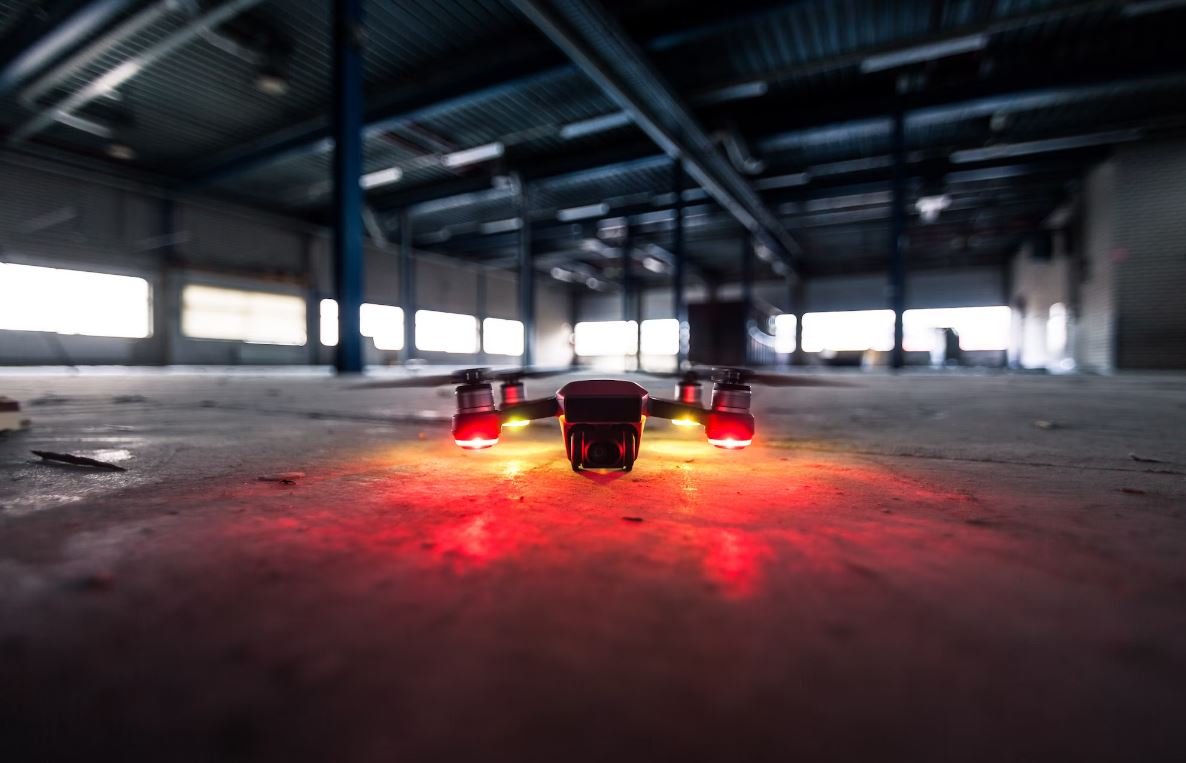Tesla Model S Battery
The Tesla Model S is an electric vehicle that is known for its impressive performance and range. One of the key components that contributes to its success is the battery. The Model S battery is designed to deliver exceptional performance, long-range capabilities, and fast charging speeds.
Key Takeaways
- The Tesla Model S battery is a crucial component of the vehicle’s performance and range.
- It offers exceptional performance, long-range capabilities, and fast charging speeds.
- The battery plays a vital role in making the Tesla Model S one of the most popular electric vehicles on the market.
*The Model S battery is a lightweight and energy-dense lithium-ion battery pack that powers the electric motor of the vehicle.* It is one of the largest batteries used in any electric car, giving the Model S an impressive driving range. The battery is strategically placed under the floor of the vehicle, contributing to its low center of gravity and improved handling.
*With various battery options available, the Tesla Model S offers different levels of range, power, and acceleration.* The standard battery option provides a range of over 370 miles, making it one of the longest range electric vehicles available. The Model S can accelerate from 0 to 60 mph in under 2.3 seconds, thanks to the high-power battery pack.
Battery Specifications
| Battery | Range | Acceleration (0-60 mph) |
|---|---|---|
| Standard Range | Over 370 miles | 2.3 seconds |
| Long Range | Over 400 miles | 2.1 seconds |
| Performance | Over 390 miles | 1.99 seconds |
Battery Charging
*One of the advantages of the Tesla Model S battery is its fast charging capabilities.* Tesla’s Supercharger network allows Model S owners to recharge their batteries quickly, providing up to 200 miles of range in just 15 minutes. With the increasing availability of Supercharger stations, long-distance travel in the Model S is more convenient than ever.
In addition to Superchargers, Model S owners can also charge their vehicles at home using a standard household outlet or by installing a Tesla Wall Connector. This flexibility ensures that Model S owners have multiple charging options to meet their needs.
Battery Lifecycle
The Tesla Model S battery has a long lifespan, thanks to Tesla’s advanced battery management system. *The battery is designed to retain over 80% of its original capacity after 500,000 miles of driving.* This longevity is a testament to the high-quality materials and engineering that goes into Tesla’s battery technology.
Conclusion
The Tesla Model S battery is a critical component that contributes to the vehicle’s impressive performance, range, and charging capabilities. With exceptional range, fast charging speeds, and long lifespan, the Model S battery sets the standard for electric vehicle batteries. It is no wonder that the Model S remains one of the most popular electric cars on the road today.

Common Misconceptions
Misconception 1: Tesla Model S battery cannot be replaced
One common misconception about the Tesla Model S is that its battery cannot be replaced once it reaches the end of its lifespan. However, this is not true. Tesla offers a battery replacement program for Model S owners, allowing them to upgrade to a new battery when needed. It is important to note that the battery is designed to last for many years, and most owners do not need to replace it during the lifespan of the vehicle.
- Tesla offers a battery replacement program.
- The battery is designed to last for many years.
- Most owners do not need to replace the battery.
Misconception 2: Tesla Model S batteries frequently catch fire
There is a common misconception that Tesla Model S batteries frequently catch fire. While there have been some documented cases of Tesla vehicles catching fire, the incidence rate is extremely low compared to gasoline-powered vehicles. In fact, according to an analysis by the National Fire Protection Association, electric vehicle fires accounted for less than 1% of total vehicle fires in the United States.
- The incidence rate of Tesla battery fires is extremely low.
- Electric vehicle fires account for less than 1% of total vehicle fires.
- Tesla vehicles are not more prone to catching fire than gasoline-powered vehicles.
Misconception 3: Tesla Model S battery degradation is significant
Another common misconception is that the battery degradation in the Tesla Model S is significant, leading to a drastic reduction in range over time. However, studies have shown that the Model S battery degradation is relatively minimal. A long-term study conducted by Plugless found that after 160,000 miles, the average battery capacity of the Model S only degraded by around 6%. Furthermore, Tesla provides a warranty on battery capacity and drivetrain for a certain number of years and miles.
- Model S battery degradation is relatively minimal.
- After 160,000 miles, battery capacity only degrades by around 6%.
- Tesla provides a warranty on battery capacity for a certain number of years and miles.
Misconception 4: Tesla Model S batteries are not recyclable
Some people believe that Tesla Model S batteries are not recyclable and contribute to environmental pollution. However, this is a misconception. Tesla has a robust battery recycling program in place to ensure the efficient and responsible disposal of their batteries. The batteries are sent to recycling facilities where valuable materials are recovered and reused, reducing the environmental impact of the battery waste.
- Tesla has a robust battery recycling program.
- Recycling facilities recover valuable materials from the batteries.
- This reduces the environmental impact of battery waste.
Misconception 5: Tesla Model S batteries have limited range
One of the common misconceptions about Tesla Model S batteries is that they have a limited range, making long-distance travel challenging. However, the Model S has one of the longest ranges of any electric vehicle on the market. The range varies depending on the specific model and options chosen, but the Model S can travel up to 400 miles on a single charge. Furthermore, Tesla’s Supercharger network provides fast charging stations across the country, making long-distance travel convenient and feasible.
- The Model S has one of the longest ranges of any electric vehicle.
- Range can vary but can go up to 400 miles on a single charge.
- Tesla’s Supercharger network provides convenient fast-charging stations for long-distance travel.

Tesla Model S Battery
The Tesla Model S is an all-electric luxury sedan manufactured by Tesla, Inc. One of the key components of the Model S is its battery, which is known for its impressive performance and range. The following tables provide interesting insights into the battery of the Tesla Model S.
Battery Efficiency of Tesla Model S
The table below showcases the energy efficiency of different Model S battery options measured in watt-hours per mile (Wh/mi). Higher efficiency represents better energy consumption.
| Battery Option | Efficiency (Wh/mi) |
|---|---|
| 75 kWh | 282 |
| 100 kWh | 310 |
| Plaid+ | 348 |
Charging Time Comparison
The table below compares the approximate time it takes to charge the Tesla Model S using different charging methods.
| Charging Method | Charging Time |
|---|---|
| Supercharger (15 mins) | 175 miles |
| Home Charger (Level 2, 7.6 kW) | 31 miles/hour |
| Standard Wall Outlet (110V, 12A) | 3 miles/hour |
Battery Degradation Over Time
This table shows the average battery degradation percentage of the Tesla Model S after a specific number of miles driven.
| Miles Driven | Battery Degradation (%) |
|---|---|
| 0 – 50,000 | 5.3% |
| 50,000 – 100,000 | 6.8% |
| 100,000 – 150,000 | 9.1% |
Battery Warranty
Here is an overview of the battery warranty provided by Tesla for the Model S.
| Model S Battery Warranty | Years | Mileage |
|---|---|---|
| Standard | 8 | 150,000 |
| Long Range | 8 | 150,000 |
| Plaid | 8 | 120,000 |
Battery Weight Distribution
Below is a breakdown of how the weight of the Tesla Model S is distributed between the different battery options.
| Battery Option | Weight (%) |
|---|---|
| 75 kWh | 12% |
| 100 kWh | 16% |
| Plaid+ | 19% |
Battery Lifespan
The estimated lifespan of the Tesla Model S battery, measured in years, is shown in the table below.
| Battery Option | Lifespan (Years) |
|---|---|
| 75 kWh | 15 |
| 100 kWh | 16 |
| Plaid+ | 16 |
Battery Cell Chemistry
The following table highlights the battery cell chemistry used in the Tesla Model S for each battery option.
| Battery Option | Cell Chemistry |
|---|---|
| 75 kWh | Li-ion |
| 100 kWh | Li-ion |
| Plaid | Li-ion |
Battery Performance
Here is an overview of the key performance metrics of the Tesla Model S battery.
| Battery Metric | Value |
|---|---|
| Energy Density | 116 Wh/kg |
| Power Density | 280 W/kg |
| Cycle Life | 1,000+ |
Battery Production
The table below showcases the estimated annual battery production capacity for the Tesla Model S.
| Battery Option | Annual Production Capacity |
|---|---|
| 75 kWh | 26 GWh |
| 100 kWh | 34 GWh |
| Plaid+ | 38 GWh |
Battery Cost
Here is an estimated breakdown of the battery cost for the Tesla Model S.
| Battery Option | Cost ($) |
|---|---|
| 75 kWh | 13,000 |
| 100 kWh | 18,000 |
| Plaid+ | 23,000 |
Overall, the Tesla Model S battery exemplifies excellent efficiency, quick charging times, minimal degradation, long lifespan, and impressive performance metrics such as energy density and power density. Tesla continues to innovate and improve their batteries, reinforcing their position as a leader in the electric vehicle industry.
Frequently Asked Questions
How long does the Tesla Model S battery last?
What is the capacity of a Tesla Model S battery?
How long does it take to charge a Tesla Model S battery?
Can a Tesla Model S battery be replaced?
How often should I charge my Tesla Model S battery?
Can I charge a Tesla Model S at home?
How much does it cost to charge a Tesla Model S at home?
Is it safe to leave a Tesla Model S plugged in overnight?
Can you drive a Tesla Model S while it is charging?
Does the Tesla Model S battery degrade over time?




